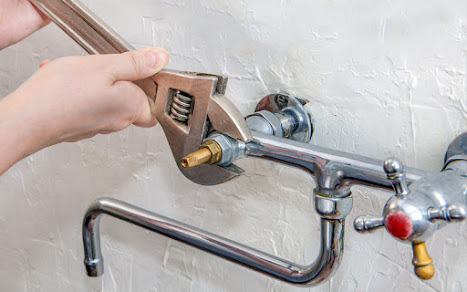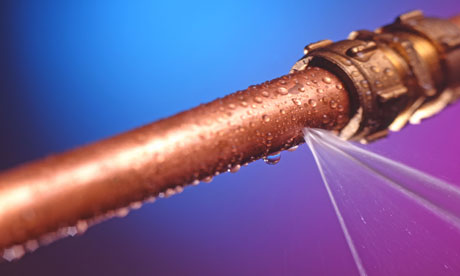The content listed below in relation to Why Do My Plumbing Pipes Make A Knocking Noise is unquestionably insightful. Have a go and make your own personal conclusions.

To identify loud plumbing, it is necessary to determine first whether the unwanted noises happen on the system's inlet side-in various other words, when water is transformed on-or on the drainpipe side. Sounds on the inlet side have actually differed causes: excessive water pressure, worn valve as well as faucet parts, incorrectly linked pumps or various other home appliances, incorrectly placed pipe fasteners, and plumbing runs including too many tight bends or other restrictions. Noises on the drainpipe side usually stem from inadequate area or, just like some inlet side noise, a design including tight bends.
Hissing
Hissing noise that takes place when a tap is opened a little normally signals extreme water pressure. Consult your local water company if you presume this issue; it will be able to tell you the water pressure in your location and also can set up a pressurereducing valve on the incoming water supply pipeline if essential.
Various Other Inlet Side Noises
Squeaking, squealing, scraping, snapping, and touching generally are triggered by the expansion or tightening of pipelines, normally copper ones supplying hot water. The noises occur as the pipes slide versus loosened fasteners or strike nearby residence framework. You can frequently pinpoint the area of the issue if the pipes are subjected; just follow the audio when the pipes are making noise. More than likely you will certainly discover a loosened pipeline hanger or a location where pipelines lie so near floor joists or other mounting pieces that they clatter against them. Affixing foam pipe insulation around the pipelines at the point of get in touch with ought to remedy the trouble. Make sure straps and wall mounts are protected and supply sufficient assistance. Where possible, pipe bolts should be affixed to enormous architectural aspects such as structure walls instead of to mounting; doing so lessens the transmission of resonances from plumbing to surfaces that can intensify and move them. If attaching bolts to framing is inevitable, cover pipes with insulation or various other durable product where they get in touch with bolts, and sandwich completions of new bolts between rubber washing machines when mounting them.
Correcting plumbing runs that experience flow-restricting tight or many bends is a last resort that must be undertaken only after consulting an experienced plumbing professional. However, this situation is relatively usual in older homes that might not have been developed with interior plumbing or that have seen a number of remodels, specifically by amateurs.
Chattering or Shrilling
Intense chattering or shrieking that happens when a shutoff or tap is turned on, and that generally disappears when the fitting is opened completely, signals loosened or defective interior parts. The service is to change the shutoff or faucet with a new one.
Pumps as well as devices such as washing devices as well as dish washers can move motor sound to pipes if they are improperly linked. Connect such things to plumbing with plastic or rubber hoses-never rigid pipe-to isolate them.
Drainpipe Noise
On the drainpipe side of plumbing, the principal objectives are to eliminate surfaces that can be struck by falling or hurrying water and to shield pipes to contain inevitable noises.
In brand-new building and construction, bath tubs, shower stalls, commodes, and wallmounted sinks and basins ought to be set on or against resilient underlayments to minimize the transmission of sound via them. Water-saving commodes and faucets are less noisy than conventional models; install them rather than older types even if codes in your area still allow utilizing older fixtures.
Drainpipes that do not run up and down to the cellar or that branch right into straight pipe runs supported at floor joists or various other mounting existing especially bothersome sound troubles. Such pipelines are big sufficient to emit significant vibration; they likewise bring significant quantities of water, that makes the scenario even worse. In brand-new building, specify cast-iron soil pipes (the large pipelines that drain pipes bathrooms) if you can afford them. Their massiveness contains much of the noise made by water travelling through them. Additionally, prevent directing drainpipes in walls shared with rooms and also spaces where people gather. Wall surfaces consisting of drains ought to be soundproofed as was described earlier, making use of dual panels of sound-insulating fiberboard and wallboard. Pipes themselves can be wrapped with special fiberglass insulation made for the objective; such pipelines have an invulnerable vinyl skin (sometimes having lead). Outcomes are not always satisfactory.
Thudding
Thudding sound, commonly accompanied by trembling pipes, when a tap or home appliance valve is switched off is a condition called water hammer. The noise and also vibration are caused by the resounding wave of pressure in the water, which suddenly has no area to go. In some cases opening up a valve that releases water swiftly into an area of piping including a constraint, arm joint, or tee fitting can generate the exact same condition.
Water hammer can normally be cured by mounting installations called air chambers or shock absorbers in the plumbing to which the problem shutoffs or faucets are connected. These tools enable the shock wave developed by the halted circulation of water to dissipate in the air they consist of, which (unlike water) is compressible.
Older plumbing systems may have brief vertical areas of capped pipeline behind walls on tap runs for the very same function; these can eventually full of water, reducing or ruining their effectiveness. The remedy is to drain the water supply completely by turning off the main water system valve and opening all taps. Then open the primary supply shutoff and shut the taps one at a time, starting with the faucet nearest the shutoff and also ending with the one farthest away.
If Your Plumbing is Making These Sounds, There’s a Problem
A Bang or Thump When You Turn Off a Faucet
If a loud bang or thump greets you each time your turn off running water, you likely have a water hammer. A water hammer occurs when the water velocity is brought to a halt, sending a shock wave through the pipe. It can be pretty jarring — even worse, damaging to your plumbing system. All that thudding could loosen connections.
Strange Toilet Noises
You’re so familiar with the sounds your toilet makes that your ears will be attuned to anything out of the ordinary. Fortunately, most unusual toilet noises can be narrowed down to just one of several problems.
Foghorn sound:
Open the toilet tank Flush the toilet When you hear the foghorn noise, lift the float to the top of the tank If you’re ambitious, you can remove the ballcock valve and disassemble it to replace the washer. Or you can more easily replace the ballcock valve entirely. This device is relatively inexpensive and available at most any hardware store.
Persistent hissing:
The hissing following a flush is the sound of the tank filling. It should stop once the tank is full. But if the hissing continues, it’s likely because water is leaking out of the tank. The rubber flap at the bottom of the tank can degrade, letting water slip through and into the bowl. That’s why the tank is refilling continuously. Fortunately, this is an easy fix:
Cut the water to the toilet by closing the shutoff valve on the water supply line. Flush the toilet to drain the tank. Disconnect the flapper Attach the new flapper Gurgling or bubbling:
Gurgling or bubbling suggests negative air pressure in the drain line, likely resulting from a clog. As air releases, it causes the water in the toilet to bubble. This could either be a minor issue or a major one, depending on the clog’s severity. Clogs can be caused by toilet paper or more stubborn obstructions such as tree roots. If you can’t work out the clog with a plunger, contact a professional plumber for assistance because a clog of this magnitude could lead to filthy and unsanitary sewage backups in your sink bathtub.

I hope you enjoyed reading our article about Why Do My Plumbing Pipes Make A Knocking Noise. Thanks for spending some time to read through our blog post. Sharing is nice. You never know, you may very well be helping someone out. Bless you for your time. Come back soon.
Pricing